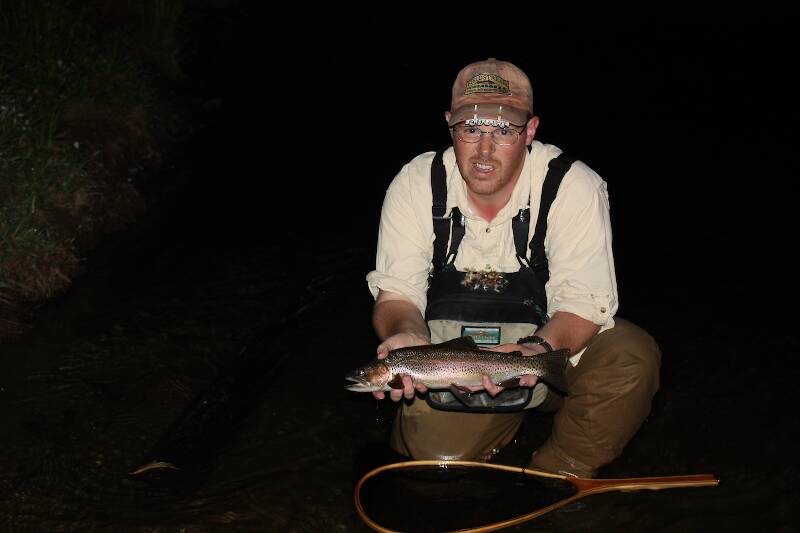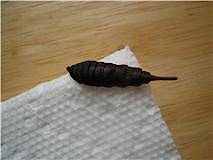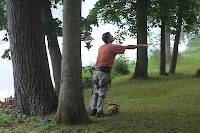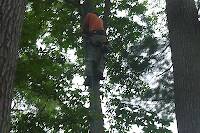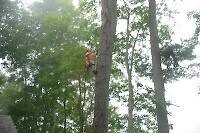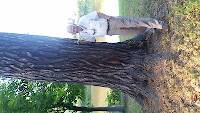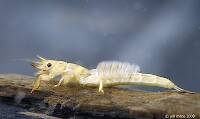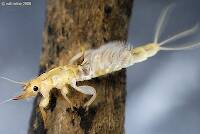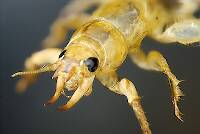
Salmonflies
Pteronarcys californica
The giant Salmonflies of the Western mountains are legendary for their proclivity to elicit consistent dry-fly action and ferocious strikes.
Featured on the forum

Troutnut is a project started in 2003 by salmonid ecologist Jason "Troutnut" Neuswanger to help anglers and
fly tyers unabashedly embrace the entomological side of the sport. Learn more about Troutnut or
support the project for an enhanced experience here.
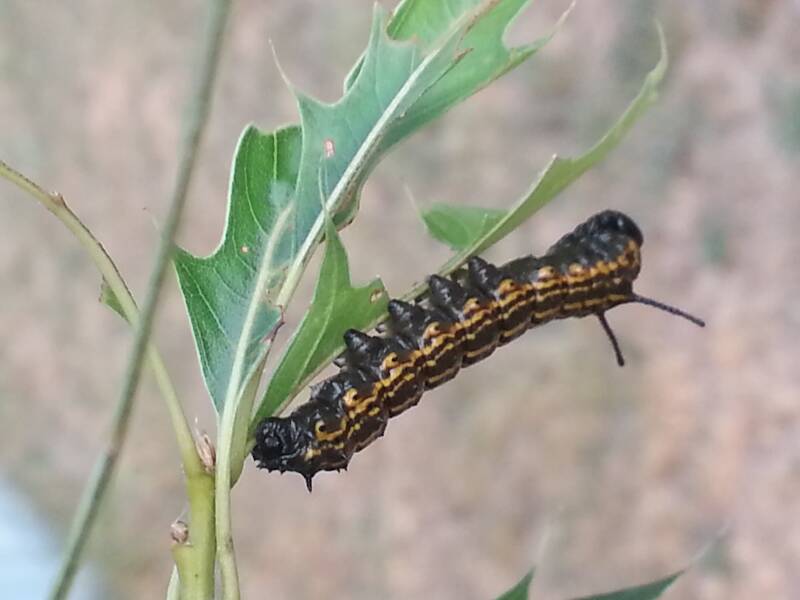
JOHNW on Aug 2, 2014August 2nd, 2014, 4:01 pm EDT
ID for this guy as well as control suggestions as they are eating my oak tree.
"old habits are hard to kill once you have gray in your beard" -Old Red Barn
Millcreek on Aug 2, 2014August 2nd, 2014, 4:27 pm EDT
John - Might be an Orange-striped Oakworm, not really a worm despite the common name. Here's a link with the latin name and a good photo.
http://www.pbase.com/image/137368768.
And another link http://bugguide.net/node/view/694262/bgimage.
Mark
http://www.pbase.com/image/137368768.
And another link http://bugguide.net/node/view/694262/bgimage.
Mark
"If we knew what it was we were doing, it would not be called research, would it?"
-Albert Einstein
-Albert Einstein
Martinlf on Aug 3, 2014August 3rd, 2014, 9:24 am EDT
John, as far as I know bacillus thuringiensis is one of the best controls for caterpillars. It's a targeted biological control, and thus less of a risk for many other creatures.
Amazon search link
Amazon search link
"He spread them a yard and a half. 'And every one that got away is this big.'"
--Fred Chappell
--Fred Chappell
JOHNW on Aug 4, 2014August 4th, 2014, 6:10 pm EDT
Thanks for the info guys. My boys have come up with a great control method as well. They pull the caterpillars off the tree gathering as many as they can and then feed the neighbors laying hens. No pesticides or chemicals needed (although the "worms" do not like Sevin.
"old habits are hard to kill once you have gray in your beard" -Old Red Barn
Quick Reply
Related Discussions
Topic
Replies
Last Reply
4
Apr 25, 2011
by PaulRoberts
by PaulRoberts
9
Jun 16, 2015
by Oldredbarn
by Oldredbarn



